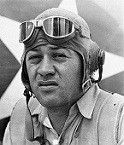rbodleyscott
Posts: 134
Joined: 10/17/2014
Status: offline

|
It would be a bit hard to explain the campaign in detail without reproducing the whole campaign manual. Various strategic elements such as finances, manpower, supply, attrition, on-going troop morale and so forth need to be taken into account to optimise your chances of success, but overall the strategic side of the campaign is streamlined to require a minimum of micromanagement, so that the battles take centre stage.
What you won't be doing is fighting a lot of one-sided battles where one side has no chance. Every battle should be a challenge appropriate to the difficulty level you have set. This is because armies automatically refuse battle and retreat if they deem themselves overmatched. Also local garrison and militia units may be mobilised to assist the field army of the province owner. However, there is a significant fog of war element affecting scouting estimates by both AI and player, which can result in poor decisions if estimates of enemy numbers are wrong.
Moreover, there is the option to Auto-Resolve smaller battles. The algorithm for this takes into account your previous record during non-autoresolved battles in the campaign so far, so once you have proved your generalship in a particular campaign, you won't need to play out every small action for fear of getting a worse result if you allow a battle to be autoresolved. Larger battles, however, must still be played out using the normal Pike and Shot battle system.
To quote the manual in answer to your specific questions:
1.12. Sieges
If an enemy province is undefended [by a field army] when it is invaded, or its army retreats, or loses a battle, the town(s) or other strong-points of the province come under siege by the invaders.
The chance of the province falling to the invader depends on the strength of the besieging force and the number of turns the province has been continuously under siege. When determining the strength of the besieging force, foot are worth more than horse, and medium or heavy artillery are worth even more.
The besieging army suffers attrition each turn from combat casualties, disease and desertion. If the province has not capitulated by the end of Autumn the besieging army breaks off any sieges and retreats.
If a province capitulates, the besieging army will automatically leave an appropriate garrison, those units being removed from the field army roster.
1.3. Campaign Year
There are six campaigning turns each campaign year: Early Spring, Late Spring, Early Summer, Late Summer, Early Autumn, Late Autumn.
Armies abandon any on-going sieges and retreat into winter quarters at the end of the Late Autumn turn. Troops can be raised in any turn if funds and manpower are available.
< Message edited by rbodleyscott -- 7/22/2015 5:02:23 PM >
|
 Printable Version
Printable Version










 New Messages
New Messages No New Messages
No New Messages Hot Topic w/ New Messages
Hot Topic w/ New Messages Hot Topic w/o New Messages
Hot Topic w/o New Messages Locked w/ New Messages
Locked w/ New Messages Locked w/o New Messages
Locked w/o New Messages Post New Thread
Post New Thread